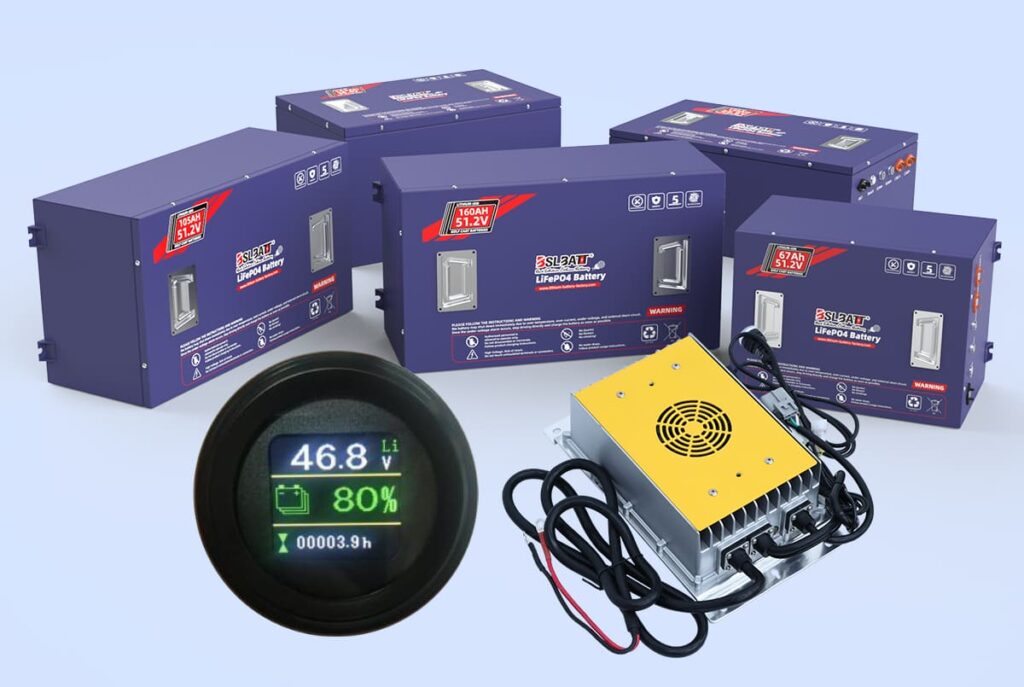Lithium-ion batteries, especially LiFePO4 batteries, are increasingly being used in a variety of applications such as electronics, industrial equipment and renewable energy storage. This is due to the significant advantages of this battery type such as high energy density, long lifetime and improved consistency.
However, for LiFePO4 batteries, close attention must be paid to the critical element of temperature to achieve optimal performance in use. Generally speaking, the temperature range of lithium batteries is divided into three categories: charging temperature, discharging temperature and storage temperature.

As an experienced manufacturer, BSLBATT has summarized the following three classifications of temperature ranges for lithium iron phosphate batteries:
| Taxa | Temperature Range |
| Charging Temperature | 0 °C ~ 55 °C |
| Discharge Temperature | -20 °C ~ 55 °C |
| Storage Temperature | 0 °C ~ 35 °C |
Remember, lithium iron phosphate batteries cannot operate and store properly at all temperatures. To ensure stable battery performance and prolong its service life, BSLBATT suggests our customers use and store his LiFePO4 batteries strictly following the temperature ranges we specified.
For example, if you live in a hot region such as Central Africa, the Middle East or Southeast Asia, we would recommend that your batteries be housed indoors and discharged for long periods using low current to slow down the chemical reaction inside the battery. In addition, a cooling fan design can be incorporated to physically help cool the battery and prevent it from working continuously within excessive temperatures.
Special Note: If the lithium iron phosphate battery is subjected to extreme operating temperatures for a long period, it will cause irreversible damage to the battery. For example, if the battery is working and charging/discharging for a long time in a low-temperature environment, lithium metal will precipitate from the surface of the battery anode, and this process is irreversible and will cause permanent damage to the battery capacity.
The Effect of Low Temperature On Lithium Iron Phosphate Batteries
In cold environments, the energy density and capacity of lithium iron phosphate batteries will decrease, and the internal resistance will increase, which may lead to undercharging when charging in low temperatures.
Low temperature may also affect the positive and negative electrodes, electrolyte and bonding agent of the battery. For example, when the temperature is below 0°C, lithium batteries cannot receive a charge. This is because lithium-ion activity decreases in low temperatures, and lithium ions and nanoparticles in the carbon material lattice combine to form LiCx (lithium compounds), which makes the flow of lithium ions on the negative electrode exceptionally difficult.
Therefore, too low a temperature can inhibit the charging and discharging efficiency of the battery. Moreover, charging at low temperatures may also generate gases, which may cause battery leakage and even lead to dangerous situations such as explosions.
The Effect of High Temperature On Lithium Iron Phosphate Battery
Experiments show that when the battery temperature reaches 55℃, its capacity will be reduced by about 10%; when the temperature exceeds 60℃, the battery may lose its efficacy completely. This is because high temperature accelerates the internal chemical reaction of the battery, leading to the loss of cathode material and the loss of lithium ions, thus reducing the usable energy of the battery.
High temperatures will also increase the internal resistance of the battery, which will lead to a decrease in current output capacity and the formation of more heat energy rather than electrical energy, thus reducing the service life of the battery.
The high and low-temperature performance of LiFePO4 battery is determined by its material properties, which are difficult to change. We have had a lot of experiments, with different materials of lithium batteries in the low-temperature performance differences, the current market’s hottest lithium iron phosphate battery at -10 °C when the discharge of power is 89% of the maximum capacity, in the industry has been quite prominent; in 55 °C under the discharge of power can be up to 90%, relative to cold storage, the capacity of the relatively small attenuation.
Storage Temperature Guide for LiFePO4 Battery
If the battery is left unused for a long period, we recommend placing your BSLBATT lithium iron phosphate battery in a 0-35°C environment. Below 0°C, the capacity of the battery will drop rapidly, the cycle life will be significantly shortened, and the service life will be shortened accordingly. In addition, the battery needs to be kept at 20%-40% during storage to prevent the battery from being over-discharged.
In conclusion, although we cannot change the high and low-temperature performance of lithium iron phosphate batteries, in practical applications, we should try to avoid keeping the batteries under extreme temperatures for a long time. In fact, by adhering to our recommended operating and storage ranges, we can still extend the life of the battery and ensure optimal performance.
BSLBATT provides the best lithium battery solutions and we have several lithium battery engineers with over 10 years of experience to ensure we remain at the forefront of the industry. If you are looking for a LiFePO4 battery solution for your application, please feel free to contact us, we provide OEM & OEM.

